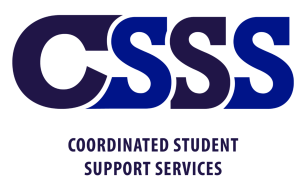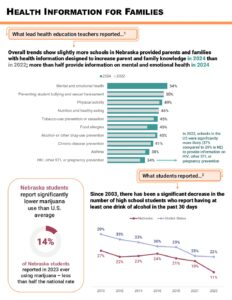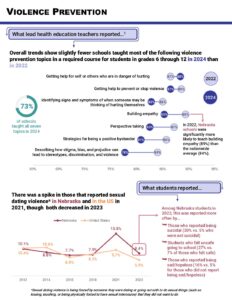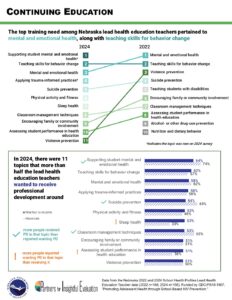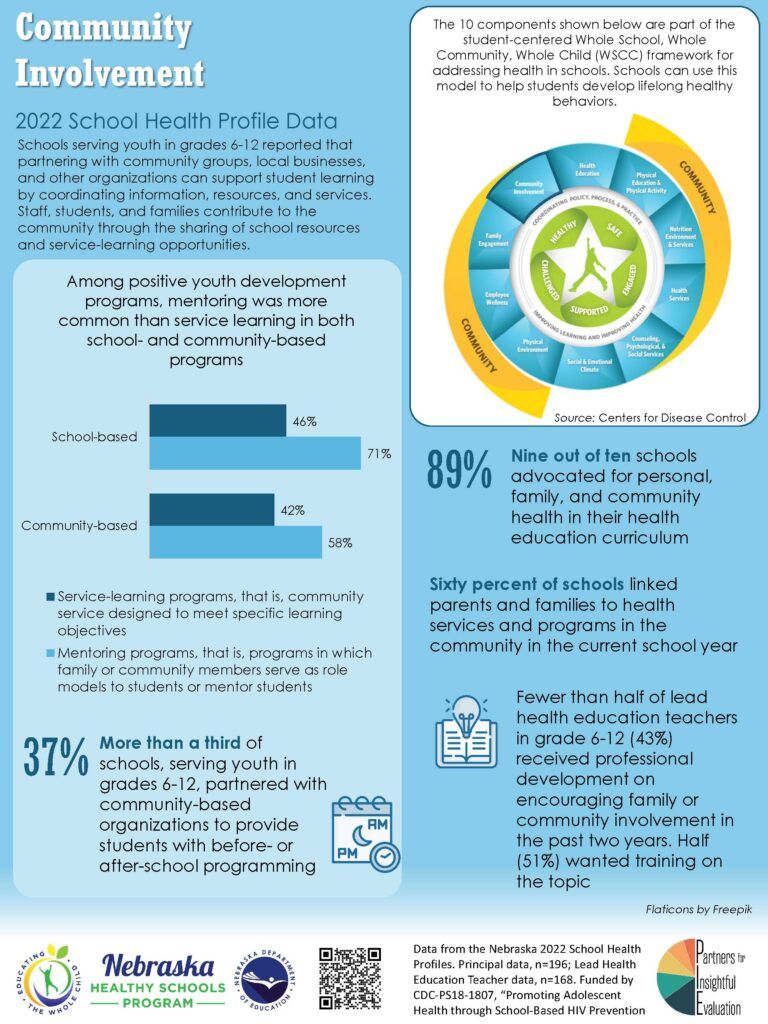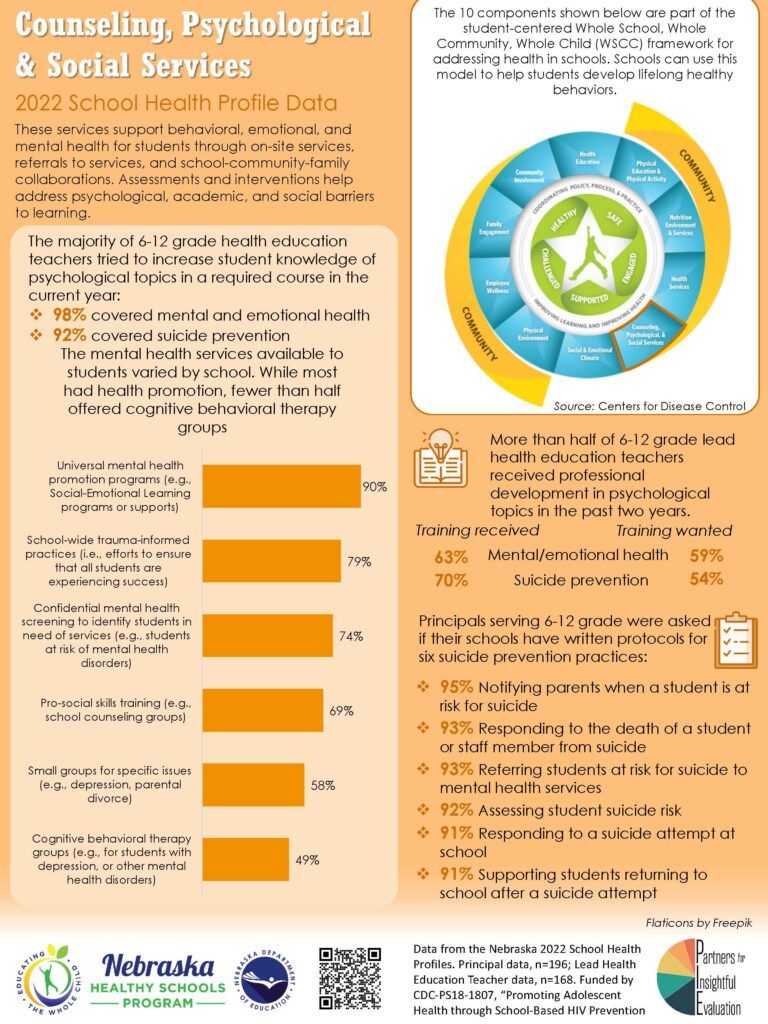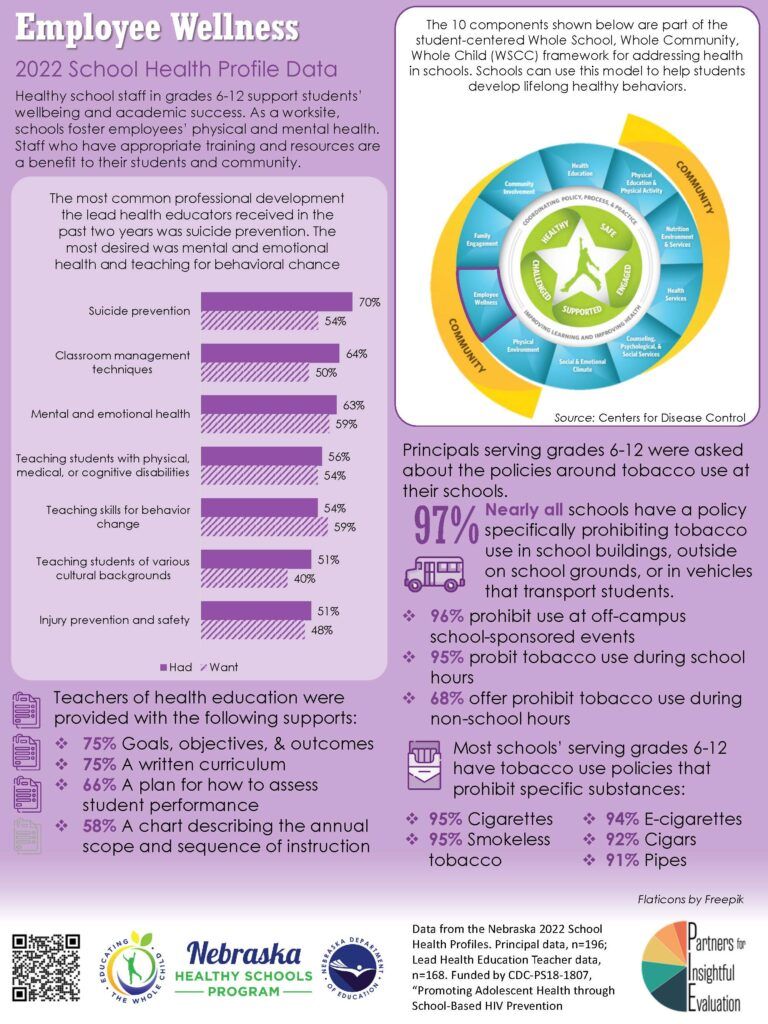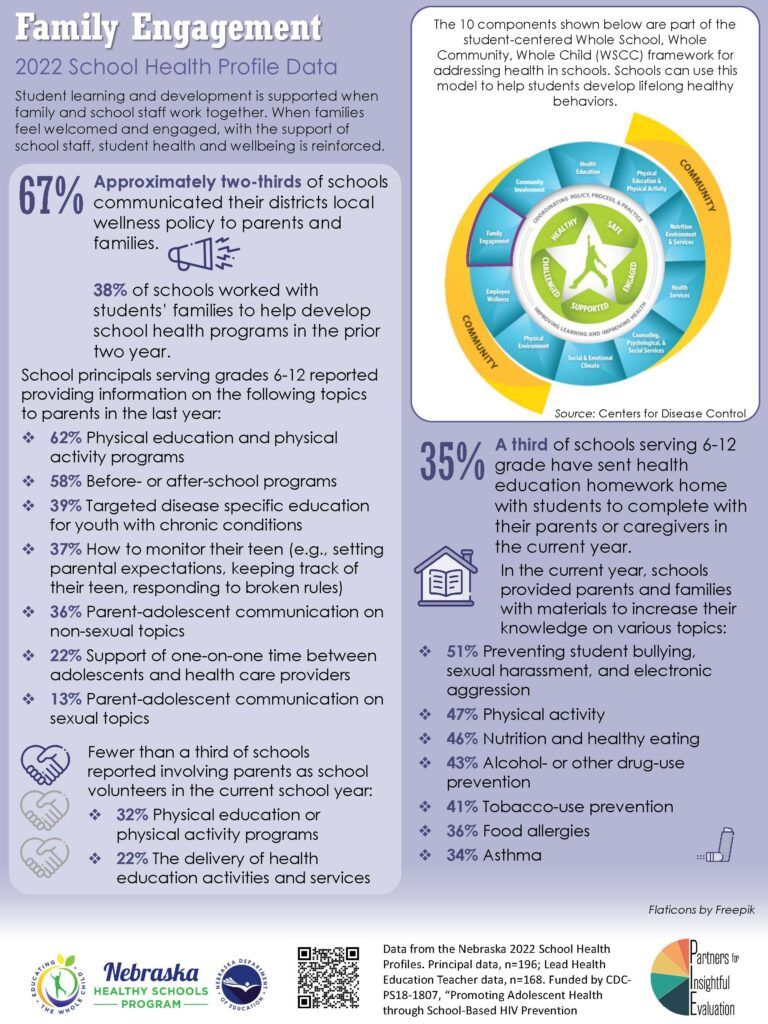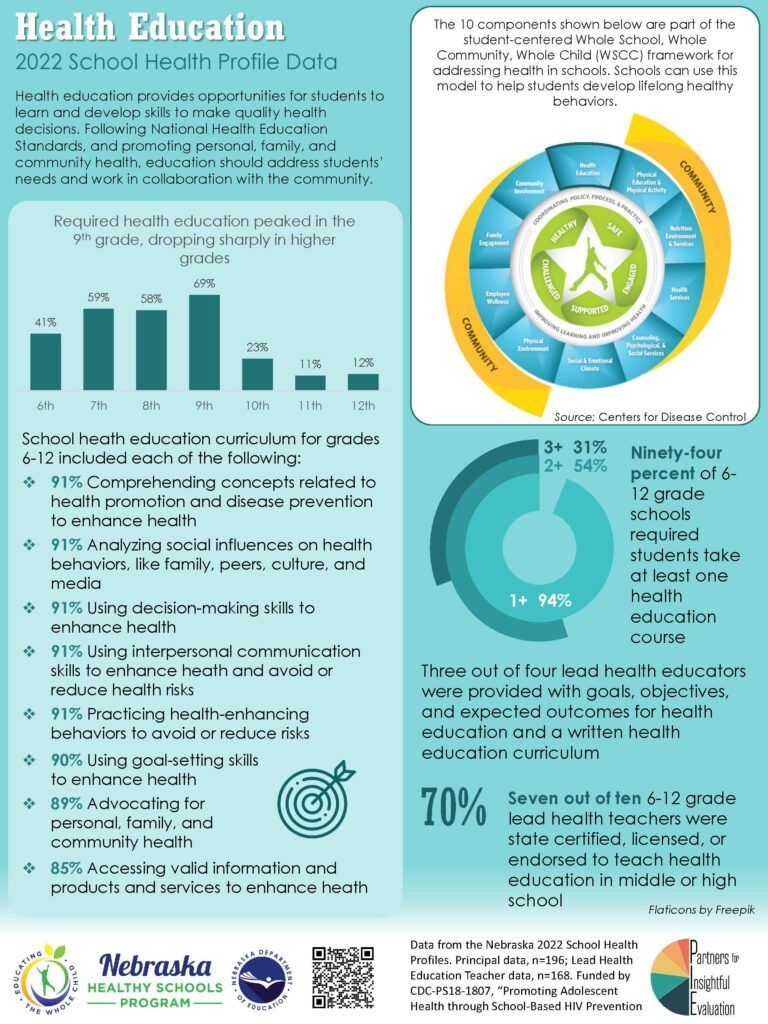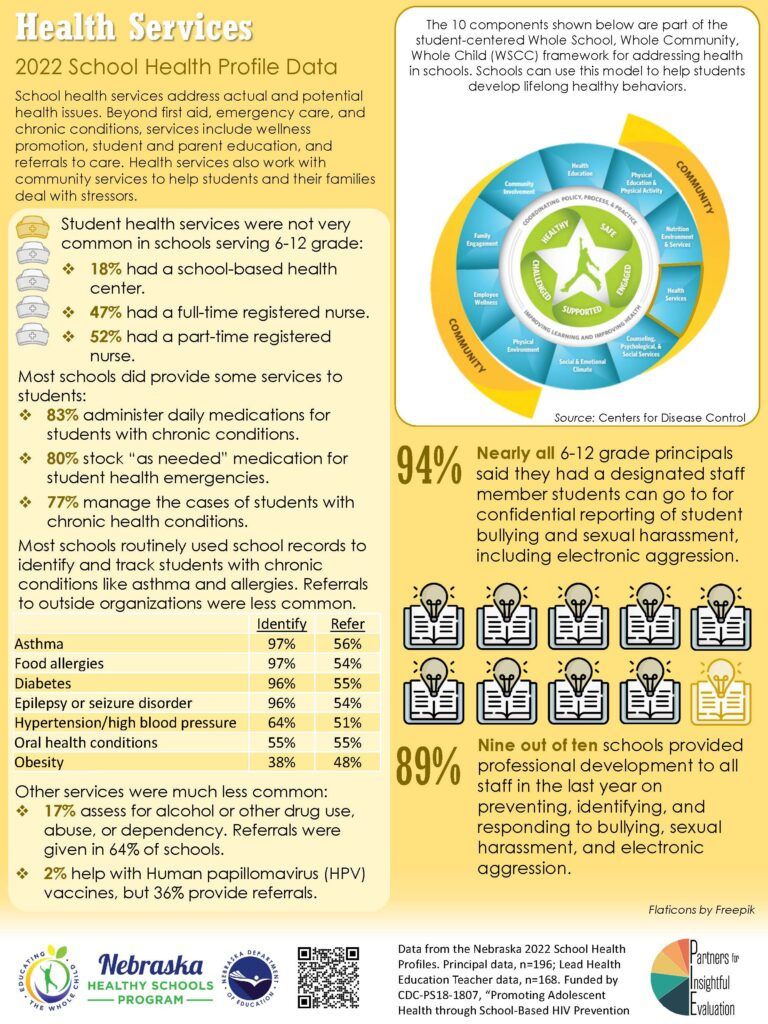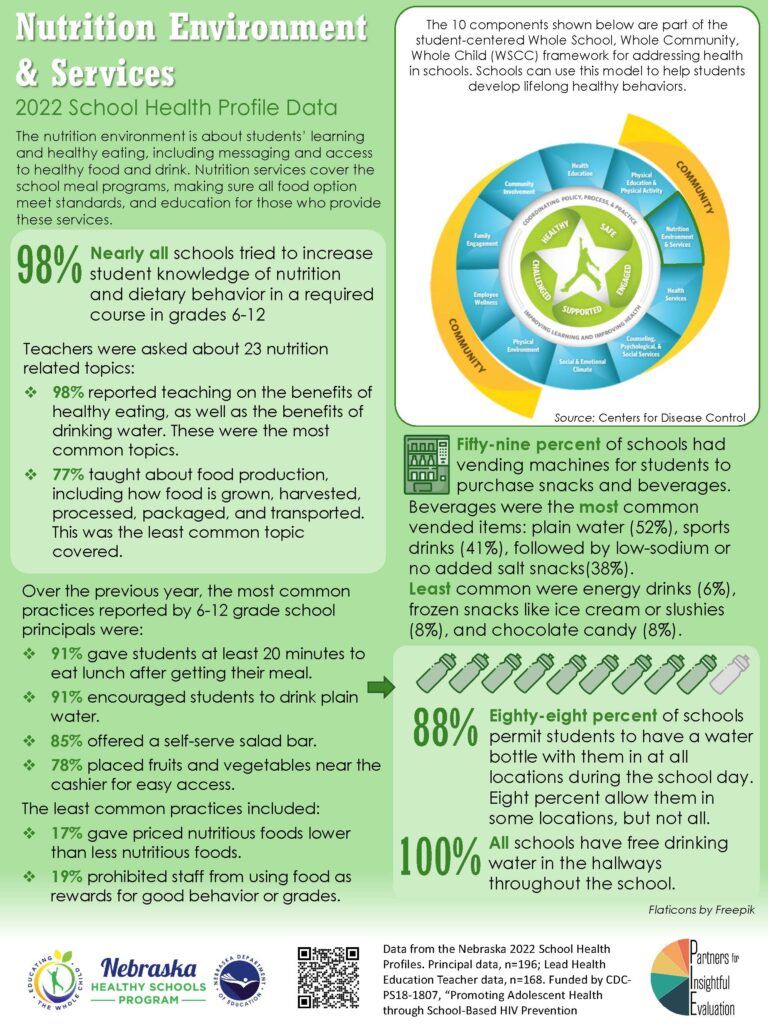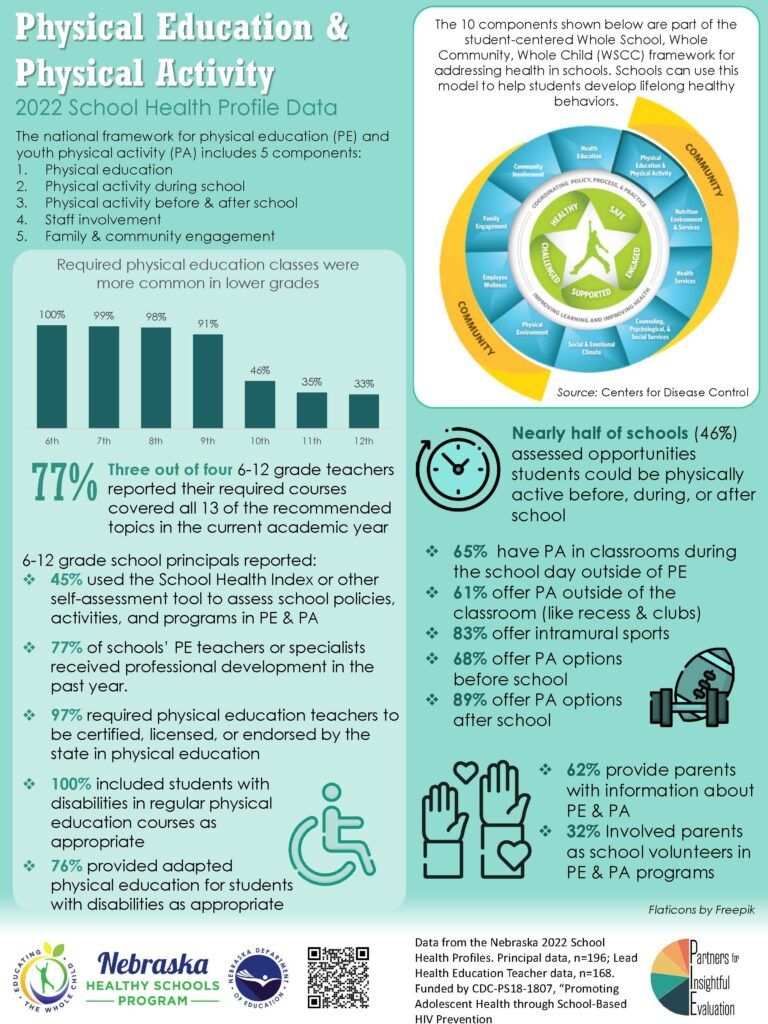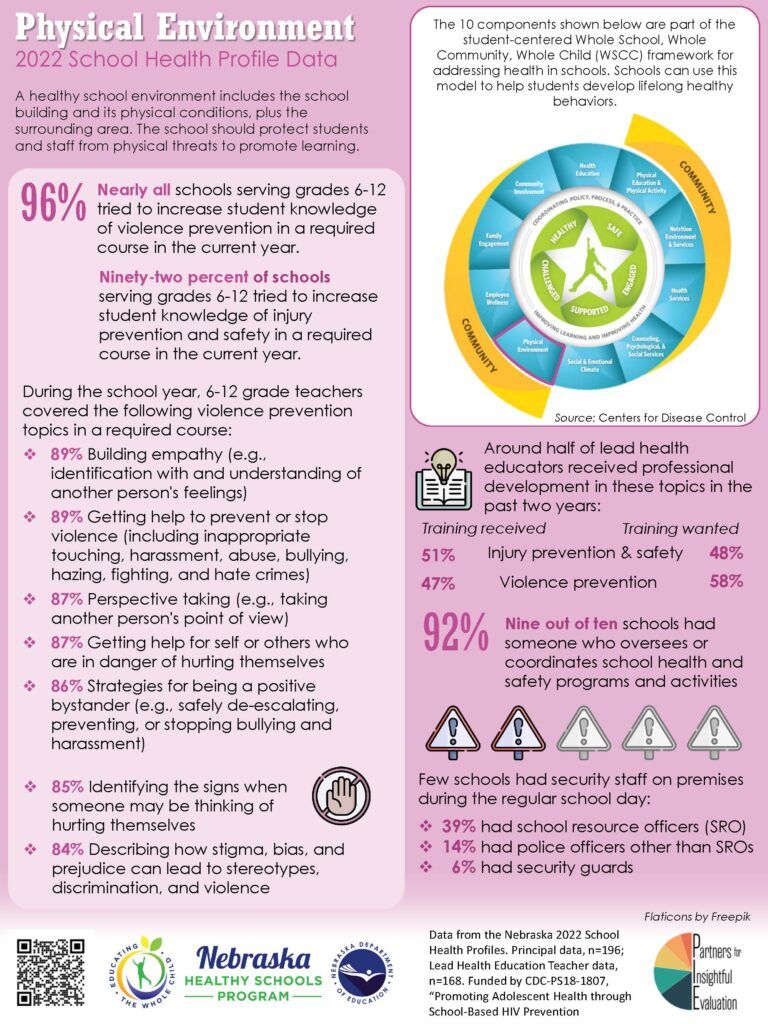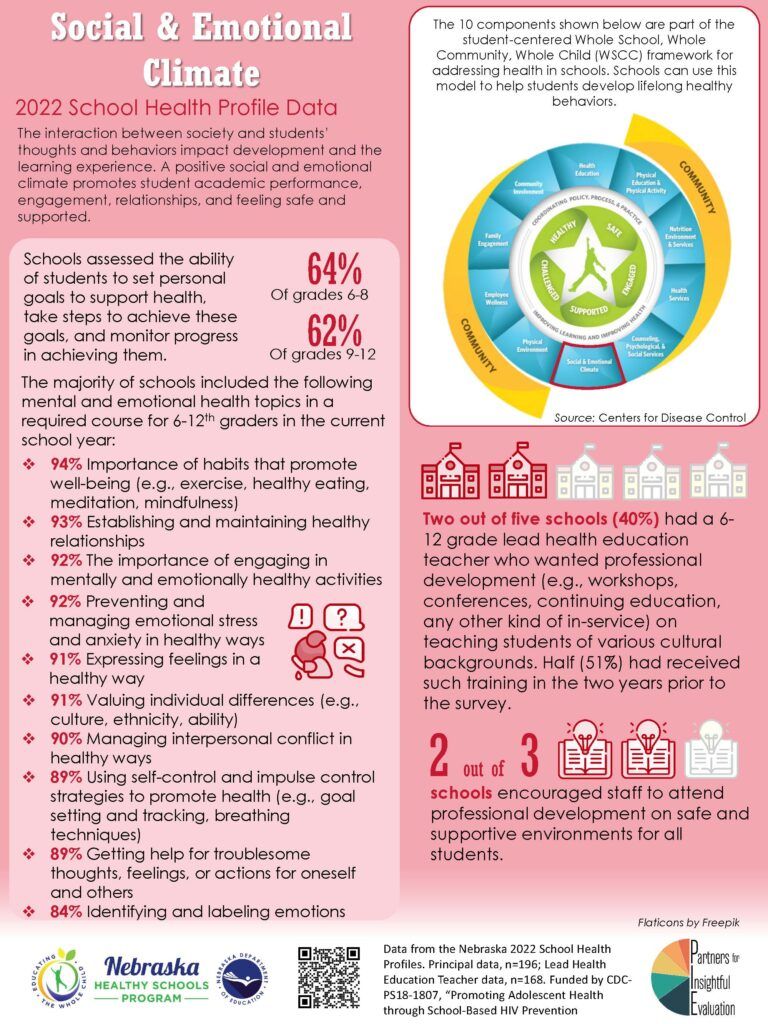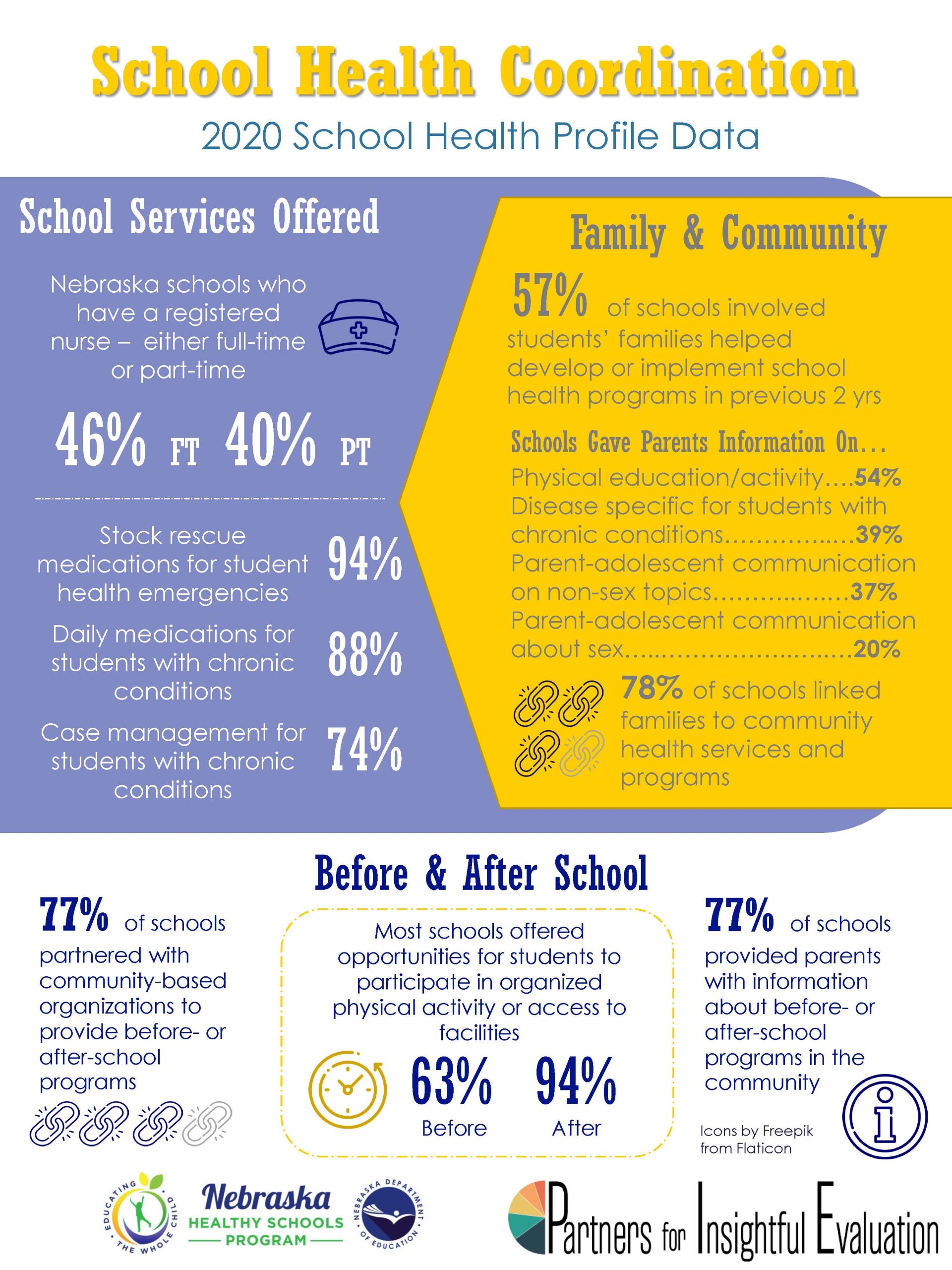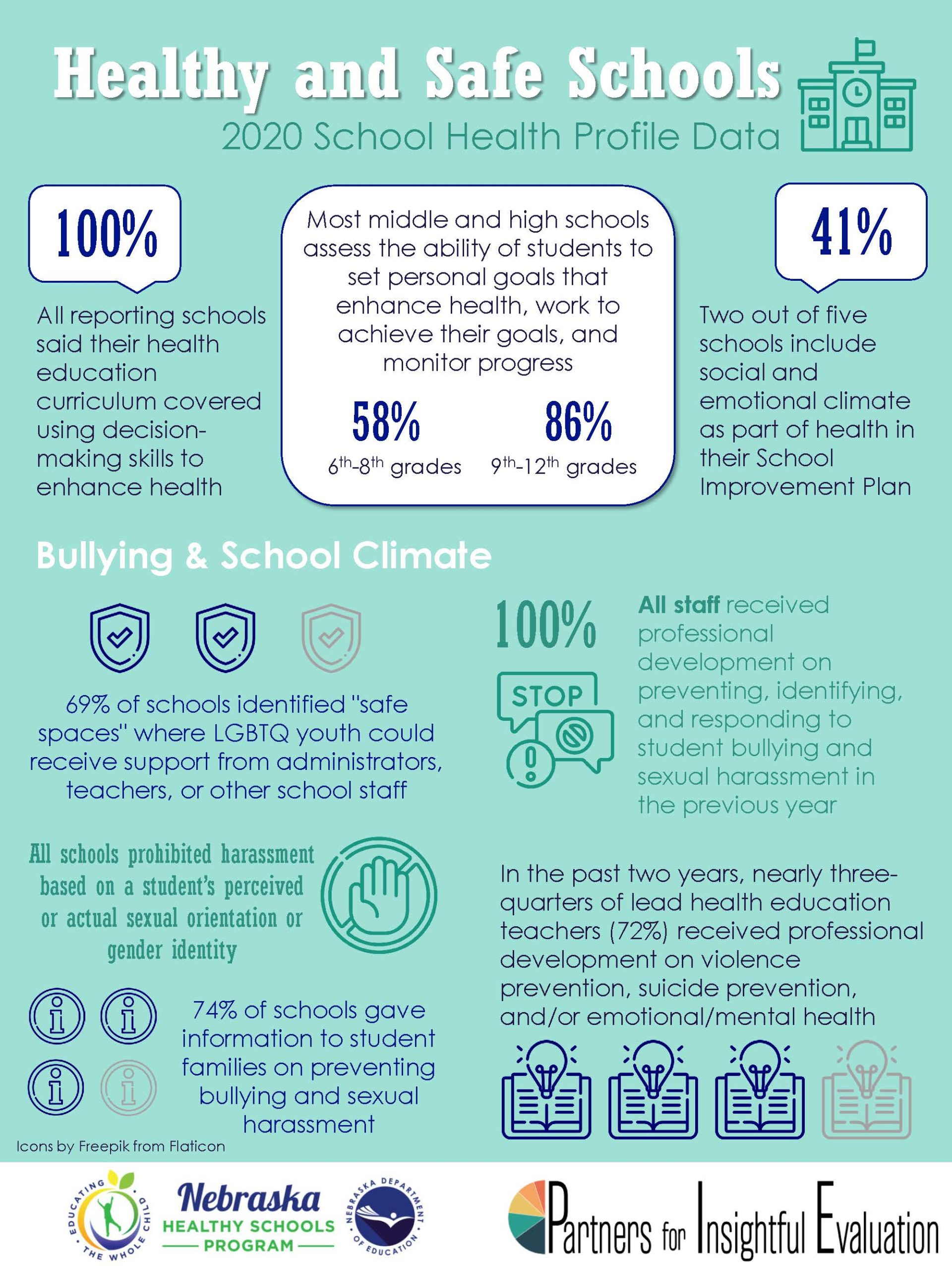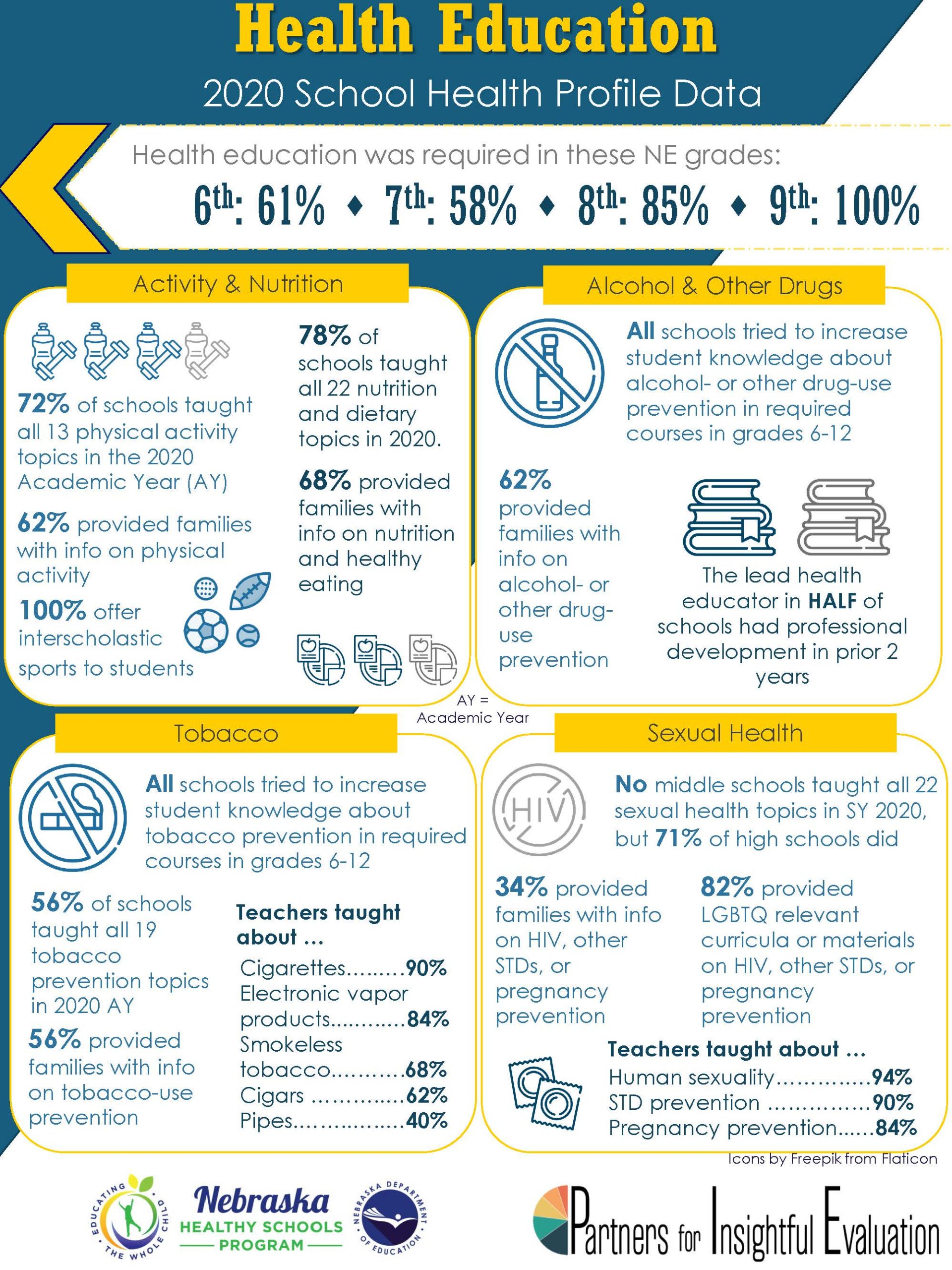NE School Health Profiles Survey Results
What is the School Health Profiles Survey?
The School Health Profiles (Profiles) is a system of surveys assessing school health policies and practices in states, large urban school districts, and territories. Profiles surveys are conducted biennially by education and health agencies among middle and high school principals and lead health education teachers. Profiles monitors the current status of:
- School health education requirements and content,
- Physical education and physical activity,
- Practices related to bullying and sexual harassment,
- School health policies related to tobacco-use prevention and nutrition,
- School-based health services,
- Family engagement and community involvement, and
- School health coordination.
Nebraska School Health Profiles Survey data can also be found in the 2023 Adolescent Health Report.
2023 Nebraska Adolescent Health Report
Together, NDE and NDHHS monitor how common and widespread various health risk behaviors are among Nebraska youth. Vital statistics records and surveys provide data for this monitoring and the measurement of change and progress towards health goals. This report focuses on the results of two sets of data collection in Nebraska: The Youth Risk Behavior Survey (YRBS) and the School Health Profiles (SHP).
Full Report Report Infographics
2022 Survey Results – Infographics
The School Health Profiles (Profiles) assists state and local education and health agencies in monitoring and assessing characteristics of school health education; physical education and physical activity; practices related to bullying and sexual harassment; school health policies related to tobacco-use prevention and nutrition; school-based health services; family engagement and community involvement; and school health coordination. Data from Profiles can be used to improve school health programs.
Two questionnaires are used to collect data – one for school principals and one for lead health education teachers. The two questionnaires were administered online to 293 regular public schools containing any of grades 6 through 12 in Nebraska during spring 2022. One or both questionnaires were received from 79% of eligible sampled schools. Usable questionnaires were received from principals in 66% of schools and from lead health education teachers in 57% of schools. Because nonresponse bias analyses indicated low bias in the principal survey and the lead health education teacher survey, the results are weighted and are representative of all regular public schools in Nebraska having at least one of grades 6 through 12. Results from the principal and lead health education teacher surveys are presented for the following types of schools in Nebraska:
• High schools with a low grade of 9 or higher and a high grade of 10 or higher;
• Middle schools with a high grade of 9 or lower;
• Junior/senior high schools with a low grade of 8 or lower and a high grade of 10 or higher; and
• All schools.
The Profiles questionnaires were developed by the Division of Adolescent and School Health, Centers for Disease Control and Prevention in collaboration with representatives of state, local, and territorial departments of health and education.
Health education provides opportunities for students to learn and develop skills to make quality health decisions. Following National Health Education Standards, and promoting personal, family, and community health, education should address students’ needs and work in collaboration with the community.
School health services address actual and potential health issues. Beyond first aid, emergency care, and chronic conditions, services include wellness promotion, student and parent education, and referrals to care. Health services also work with community services to help students and their families deal with stressors.
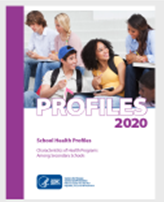
Profiles data are collected from self-administered questionnaires from the principal and the lead health education teacher at each sampled school. In 2020, 44 states, 28 large urban school districts, and 1 territories obtained data representative of their jurisdiction. For the first time, in the 2020 cycle, nonresponse bias analyses were conducted for sites with response rates below 70% for either the principal or teacher survey or both. These analyses examined whether responding schools differed from nonresponding schools (to learn more about the analyses see page 23-24 of the CDC Report). If a site had <10 significant differences between responding and nonresponding schools for the 25 frame and auxiliary variables or if the site had a response rate of 70% or greater, data from that site were weighted to be representative of public secondary schools in the jurisdiction. Only sites with representative data are included in this report.
2020 Nebraska School Health Profile Data Reports:
Weighted Principal Survey Results
Weighted Lead Health Education Teacher Survey Results
Healthy Schools Priority LEAs Comparison Report
Questions? Contact Jessie Coffey, jessie.coffey@nebraska.gov, 402-419-3205



